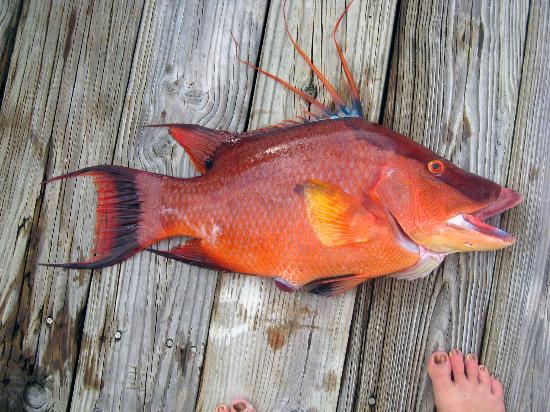
Lachnolaimus maximus
FAMILY
Labridae
TAXONOMY
Lachnolaimus maximus Walbaum, 1792, type locality not specified
(probably Bahamas or Carolinas).
OTHER COMMON NAMES
French: Labre capitaine; Spanish: Doncella de pluma.
PHYSICAL CHARACTERISTICS
Total length 36 in (91 cm). Often mottled, light orangey brown,
but can adjust its color to match immediate surroundings. Adult
dorsal fin sports three unusually long spines on anterior end. Dark
stripe extends through eye to base of dorsal fin just behind head.
DISTRIBUTION
Bermuda, along the Atlantic coast of the Americas, from Nova
Scotia to northern Venezuela, and into the southern and eastern
Gulf of Mexico.
HABITAT
Sandy reef areas.
BEHAVIOR
Males are territorial, holding narrow areas about 100 yards
(90 m) long. Around a dozen females share the territory with
the male.
FEEDING ECOLOGY AND DIET
Prefers mollusks, crabs, and other hard-shelled invertebrates.
Diurnal; during feeding ejects water streams into substrate to
root out buried invertebrates.
REPRODUCTIVE BIOLOGY
Sex reversal is common. All fishes begin life as females, which can
develop into males. No parental care is given to the pelagic eggs.
CONSERVATION STATUS
Listed as Vulnerable by the IUCN.
SIGNIFICANCE TO HUMANS
Commercial food fish. The large adult size and relatively
sedentary character of this species make it particularly vulnerable
to overharvesting.
Other popular Animals
Photo Gallery of - Hogfish

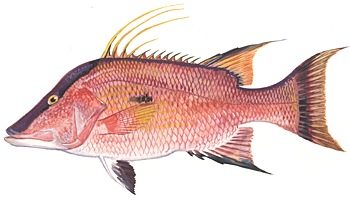
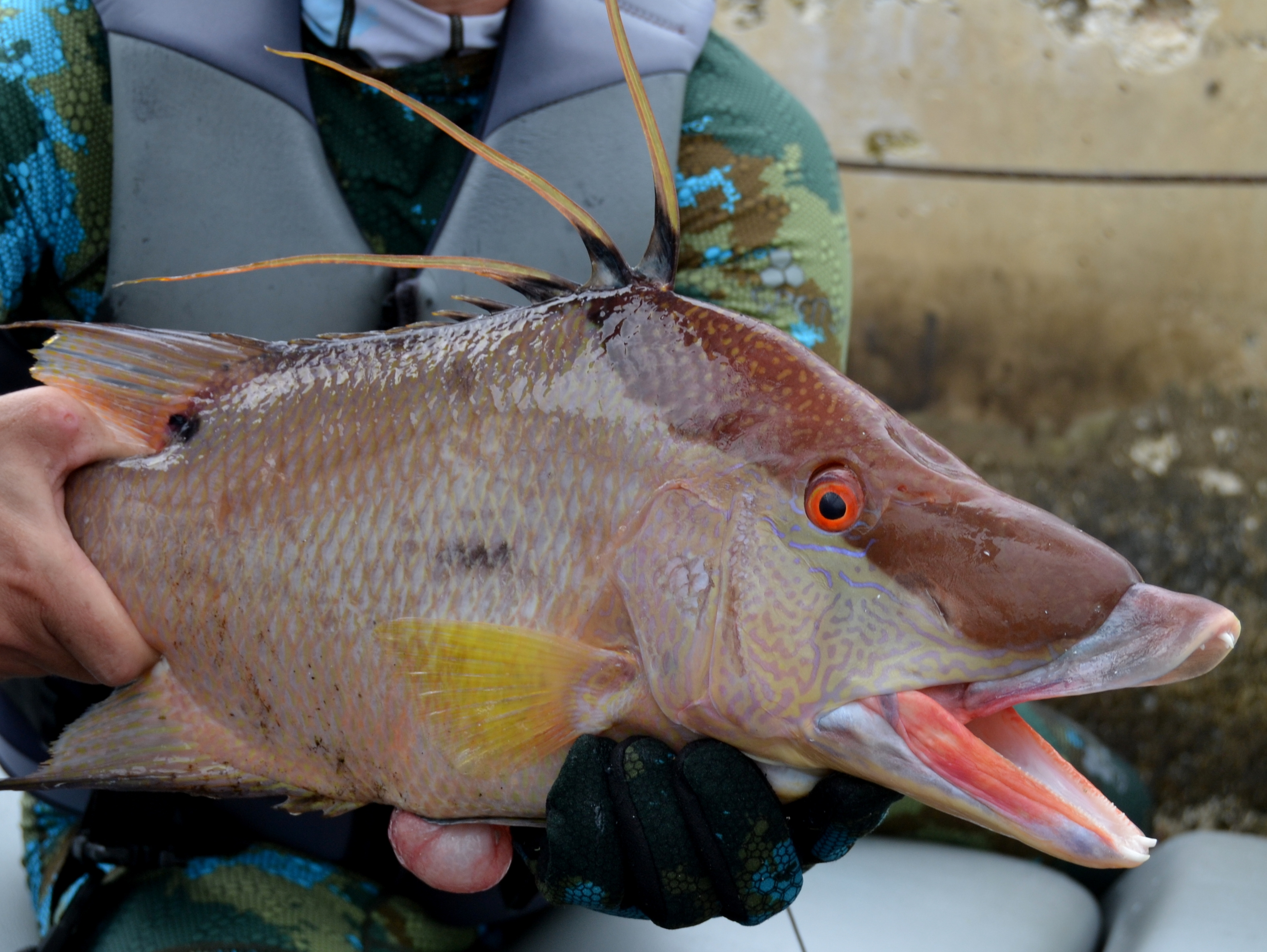
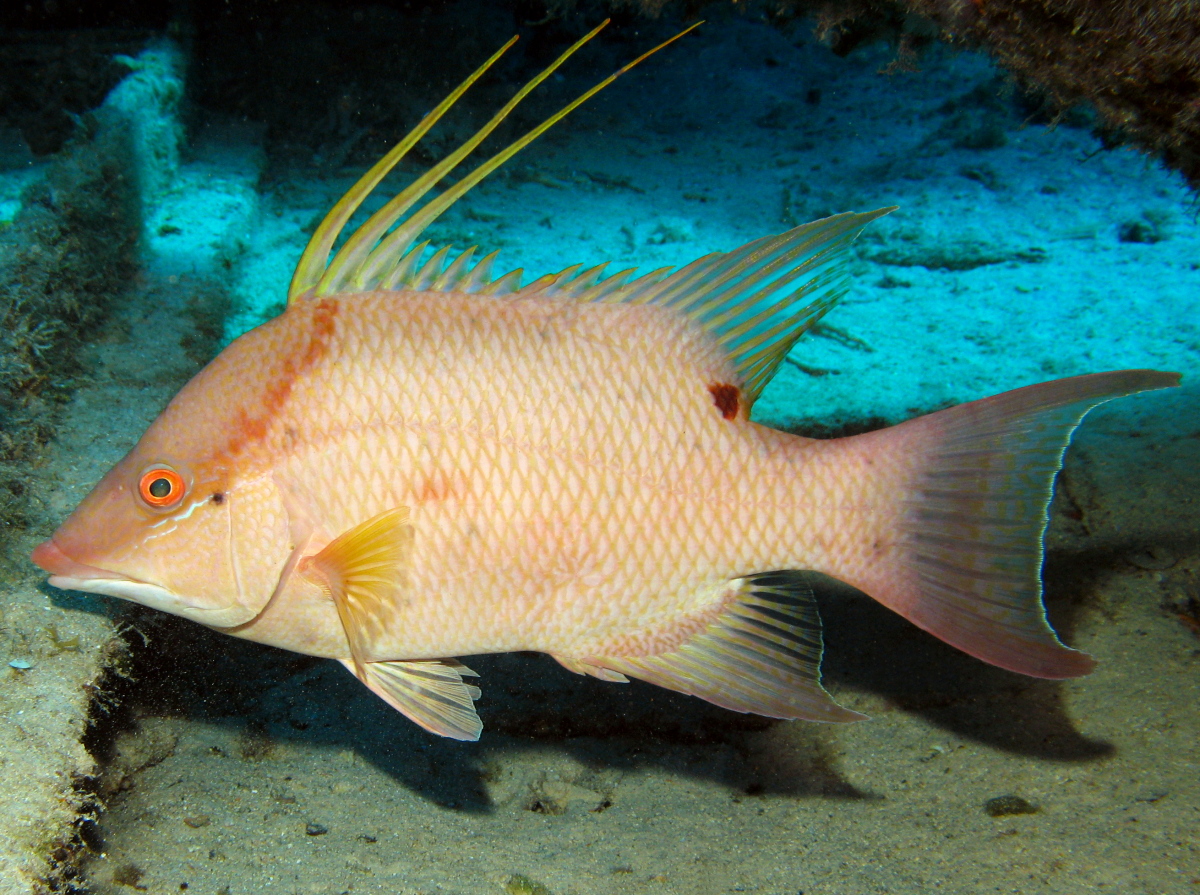
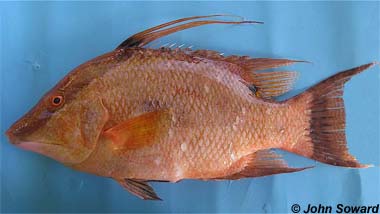
 Animalia Life
Animalia Life